Surtout de Table (Table centerpiece), France, ca. 1810
Pierre-Philippe Thomire (French, 1751–1843)
Cast and gilded bronze with hand engraving, cut glass, silvered mirrored glass
Bequest of the Reverend Alfred Duane Pell, 1991-31-1-a/ww
The changing fashions in dining, ranging from the time of day of the main meal, to its location, who was included, and how people entertained all contributed to the creation of a vast array of vessels and table decorations from the late seventeenth through the nineteenth centuries. In the seventeenth century, a large house normally would have a great hall with a long refectory table. The social hierarchy of the household and guests determined who ate where, with the house owner or lord sitting at one end and the staff either at the other end or at another table in the same hall. Entertaining was usually in the form of a dessert banquet, where sugar sculptures and other fancy sweets were arranged in elaborate patterns on the banqueting table, generally a long, straight table. Royalty dined at such tables, facing people who were invited to observe them.
After the death of Louis XIV in France in 1715, the younger court of the Regency period and Louis XV spent far more time in the more intimate spaces of Paris than in Versailles. With the increased emphasis on privacy and smaller domestic spaces in the early eighteenth century came the dining room, with smaller, often oval, tables. The objects that sat on these tables would have featured dishes of arranged food for the main course as the primary decoration along with possible sugar or porcelain figurines; silver, brass, or porcelain candlesticks or candelabra; flatware; and glasses.
With the French Revolution of 1789, dining changed again. The intimacy of the private dining room became negatively associated with the frivolity of lifestyle attributed to the ancien régime. Once again, longer rectangular tables came back into fashion. By this time, the idea of eating in staggered courses, known as service à la russe, was coming into fashion, enabling the table to have more room for inedible display objects and lighting. The most elaborate of table display objects was the surtout de table, which was a large centerpiece with mirrored plateaus and numerous candelabra and other possible display pieces on top, all to reflect and give more light and sparkle to an important occasion.
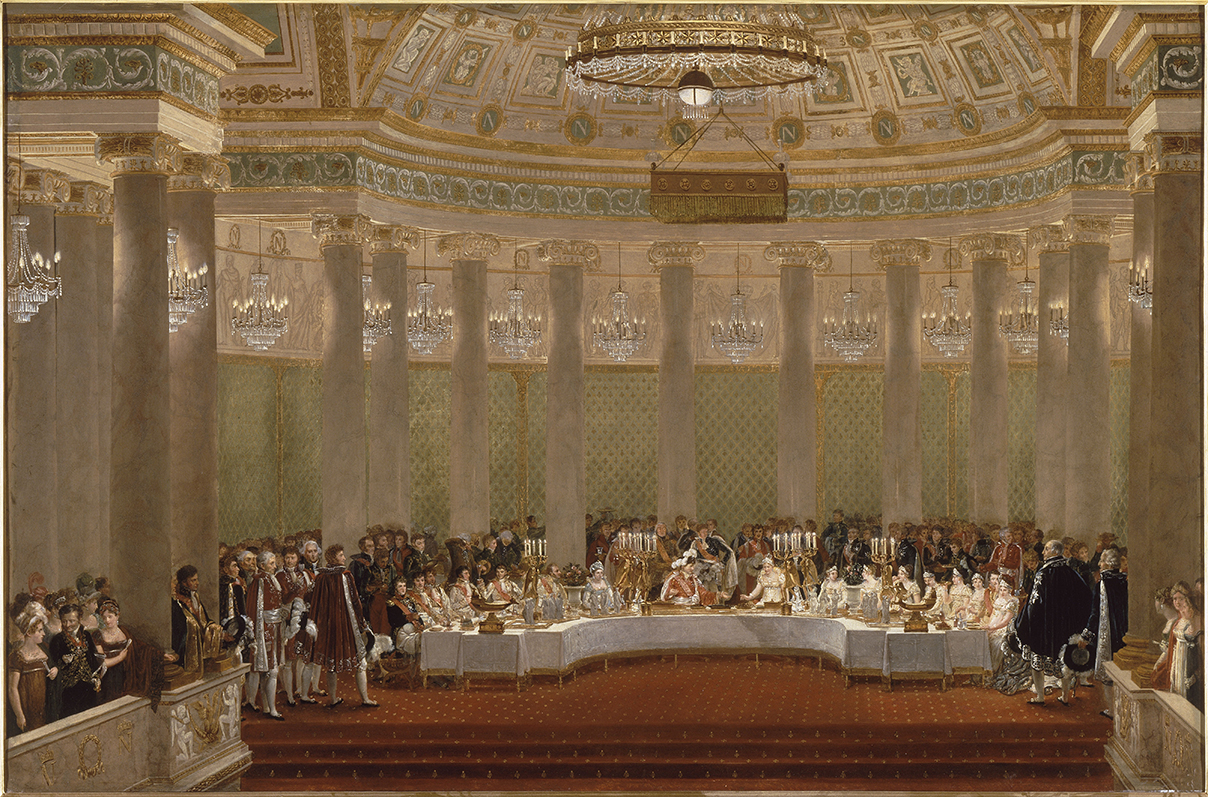
(Fig. 2) Painting, The Wedding Banquet of Napoleon I and Marie-Louise in the Grand Salon of the Tuileries Palace, 2 April 1810, 1812, Alexandre-Benoit-Jean Dufay, Casanova, Musée National du Château de Fontainebleau
In a painting of the sumptuous wedding of Napoleon and his second wife Marie-Louise in 1812 (Fig. 2), the surtout de table is arranged much as the one in Cooper Hewitt’s collection (Fig. 1). This not only gives an idea of how this object was used, but the level of the commission. Indeed, the history that was passed down from the donor is that this surtout was a present from Napoleon to his stepson Eugène de Beauharnais. This is a plausible story, not only because Pierre-Philippe Thomire, the designer and maker of this gilt-bronze work,[1] became “Gilt bronze maker to the Emperor” in 1809, but because he is responsible for several similar examples made for Napoleon to give to his mother, sisters, and a few of his marshals.[2] Recent examinations of Eugène’s inventories have revealed more than one surtout among his possessions.[3] In 1816 house accounts under “extraordinary and unexpected expenses” are costs for moving two large “surtouts de table” to his house in Munich. The surtouts had been sent to Thomire Duterme and Ciev from Eugène’s house in Paris for re-gilding, missing pieces, and other furnishings including artificial flowers at a cost of 2816 Francs.[4]
Although Thomire learned his bronze-working skills from his father in the foundry and his chasing and gilding from Louis XVI’s chief bronze maker Pierre Gouthière (1732–1813), he survived the change in patronage caused by the French Revolution by allying himself with both furniture makers for whom he made mounts in the neoclassical style favored by Napoleon and by purchasing a decorating firm that was a supplier to Napoleon’s palaces. The motifs used appear elsewhere in Napoleonic interiors as well as in other fashionable articles. The Three Graces, seen holding a basket for fruit (Fig. 3), are adapted from ancient Greek models or Roman interpretations of them. These comparisons to antiquity greatly appealed to Napoleon as he looked for models to compare himself with the emperors and rulers of ancient eras.
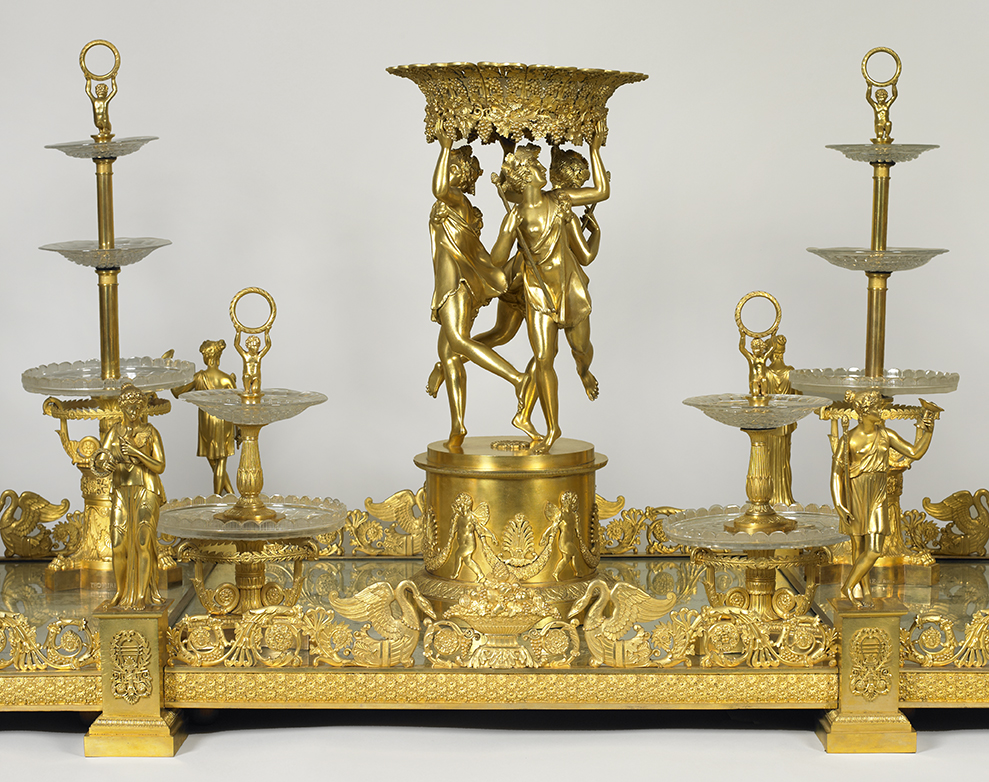
(Fig. 3) Detail of the Three Graces
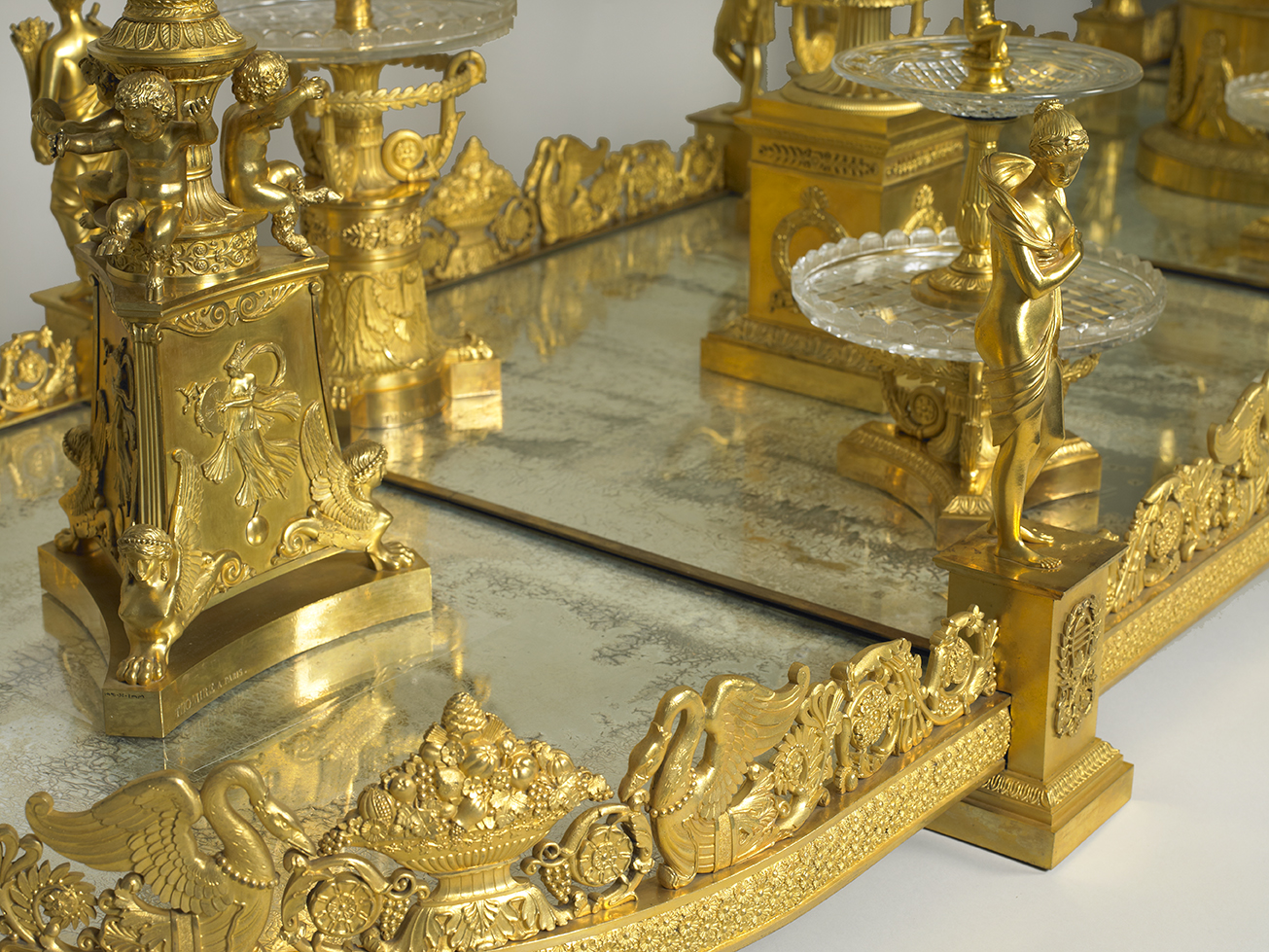
Detail of surtout de table
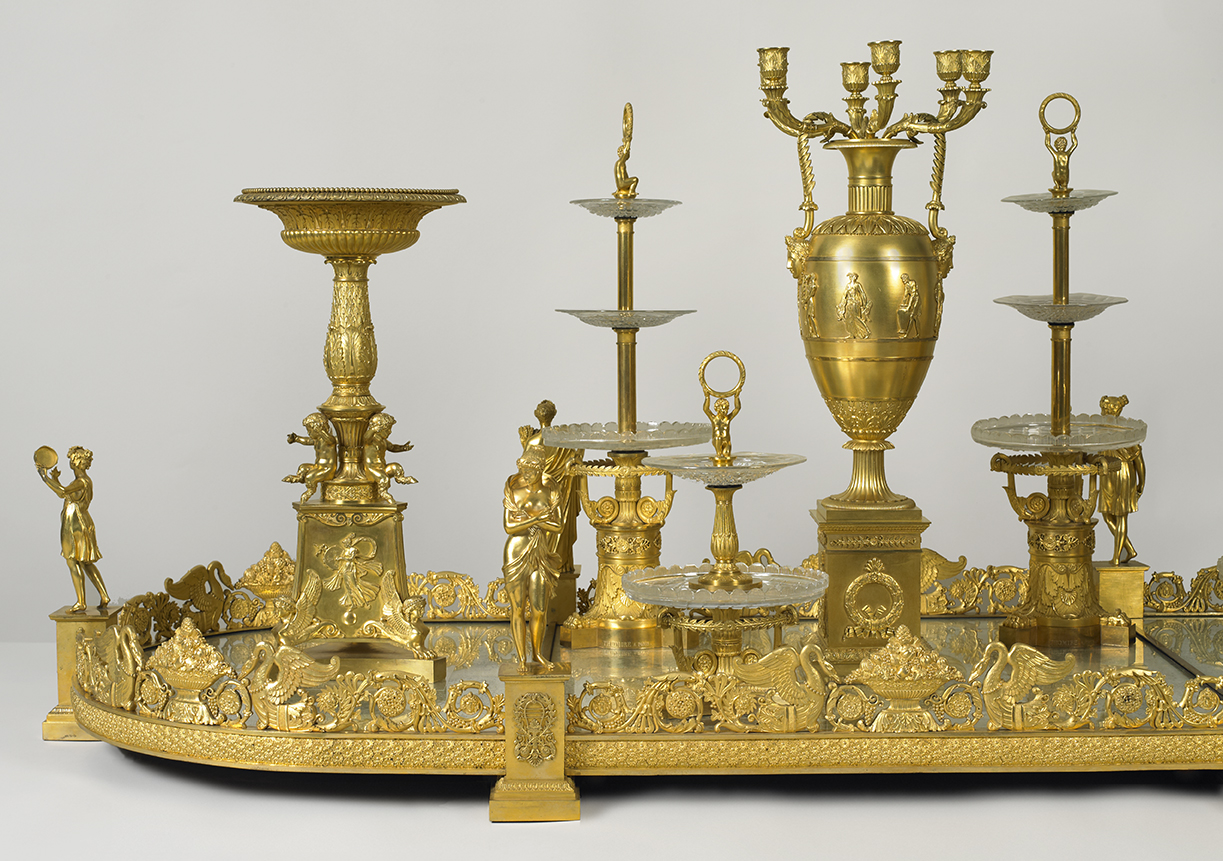
Detail of surtout de table
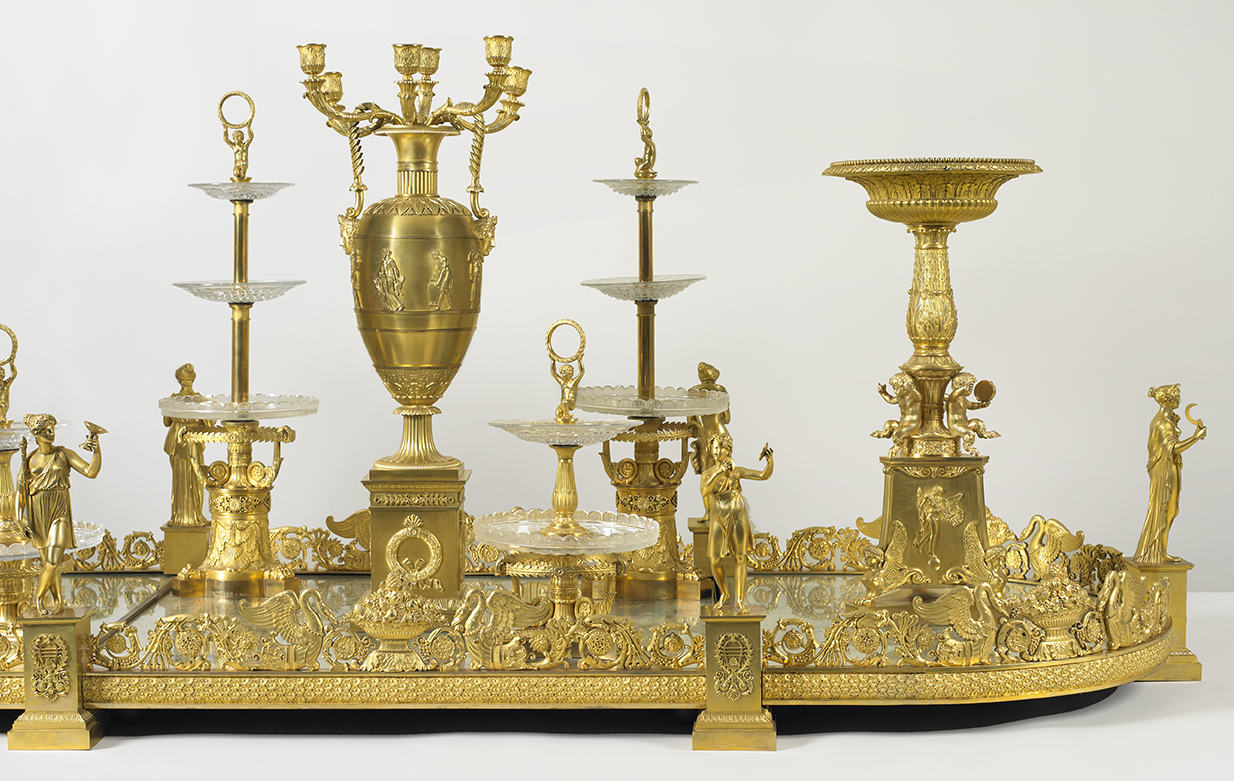
Detail of surtout de table
Sarah Coffin is the former curator and head of Product Design and Decorative Arts at Cooper Hewitt. This essay was originally published in Making Design, the handbook to the collection of Cooper Hewitt, Smithsonian Design Museum.
Footnotes
[1] D. H. Cohen, “Pierre Thomire-Unternehmer und Künstler,” Vergoldete Bronzen, II, Hans Ottomeyer (München: Klinkhardt & Biermann, 1986).
[2] Sir Pierson Dixon, “French Empire Clocks in the British Embassy at Paris,” Connoisseur Vol. 150 (January 1968): 2–9. The embassy was formerly the house of Napoleon’s sister, Pauline Borghese, from whom the Duke of Wellington arranged to purchase the house and contents for the British as an embassy in 1814 after the abdication of Napoleon. The one made for her remained there.
[3] I am indebted to Ulrich Leben for this information, as I am for the citation in endnote 4.
[4] (0643/B 120) Maison du Prince Eugène, Eugène de Beauharnais papers, Firestone Library, Princeton University.

2 thoughts on “Surtout de Table: Sustenance of Political Power”
Dee Russell on May 6, 2019 at 10:05 pm
Hi, intended party. I have a statue of a bronze type figure, would like to know it’s value.
email address is. Everydayjoy888@gmail.com
Bobby Dean Phillips on May 18, 2020 at 8:51 pm
As an estate manager, whom has been in the Private Service Profession for more than 34 years, I wish to thank you for this wonderful article. I would like to also mention that there was an incredible dessert surtout de table also attributed to Napoleon’s magnificience which is in Paris. This one is not mirrored but done in Marble and Precious and semiprecious stone.